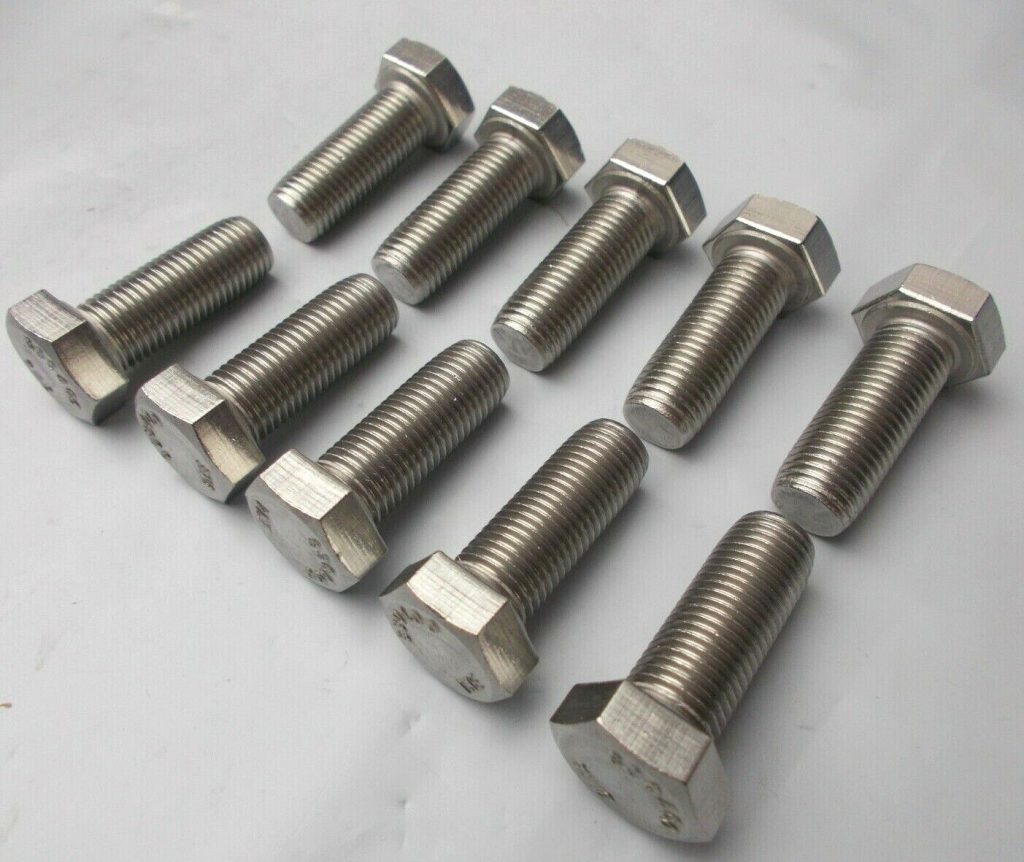
Using high-quality fasteners will help reduce the risk of galling. It’s also a good idea to use lubricants to actively prevent damage.
Many stainless steel bolts have a passivated oxide layer that makes them resistant to harmful corrosion. However, under the wrong conditions, this coating can be punctured, exposing pure metal.
Anti-Seize Lubricants
Anti-seize lubricants are one of the most effective solutions to prevent thread galling. Whether applied to the fasteners prior to assembly or during dismantling, these metal-free pastes and sprays reduce friction between the bolts and studs. They are also resistant to high temperatures, so they can be used in most industrial environments.
Nickel-based antiseize lubricants are ideal for stainless steel. Copper-based lubricants are not recommended as they can cause corrosion of stainless steel fasteners.
When choosing an antiseize lubricant, be sure to read the technical data sheet for recommendations on application and temperature range. Most guidance recommends applying a thin layer of anti-seize compound. This is sufficient to ensure that all of the fastener valleys are filled with the lubricant and that the bolt will be able to tighten and dismantle without any problems. To remove excess anti-seize, a clean degreaser or an organic solvent such as acetone can be used. These solvents will break down the grease and allow those lubricating solids to exit the pores of the surface.
Check the Threads
When fasteners come together they are exposed to friction that generates heat. This heat can wear down the protective oxide layer that covers the threads and exposes the base materials to each other. This is known as galling.
Coarse threads are less prone to galling than fine ones but it is not possible to eliminate the problem completely. The key is to use a high-quality lubricant that fills the valleys between thread flanks and reduces friction.
It is also important to slow down the installation speed and not apply excessive pressure during tightening. This will limit the amount of heat generated and reduce the chance of galling. Finally, always visually inspect the fasteners before installing them. Poor packaging and haphazard handling can nick or dent the threads making them more prone to galling. Standard nuts should work well with bolts and if they do not, this may be a sign that the threads are damaged.
Clean the Surfaces
Many factors can contribute to thread galling, especially in an operating environment that has dirt or abrasive particles that are kicked up during installation. Damaged or dirty threads add to the friction during installation and can cause more problems than just galling they can actually cause the parts to stick or seize permanently.
Stainless steel and aluminum fasteners have a natural protective oxide film that prevents corrosion but this can break down under installation pressures and cause metal-to-metal contact that causes galling. As a result, microscopic high points rub against each other shear and lock together causing more friction that heats the surfaces to fuse and potentially seize the fasteners.
This can be prevented by using a pre-applied anti-seize lubricant, slowing down the installation speed, or using coarser threads. Using a threadlocking agent also helps reduce the amount of galling caused by mating metals with different hardnesses. For example, a nylon insert lock nut paired with stainless steel is prone to galling because the nut adds more resistance and generates more heat during installation.
Avoid Damage
Many fasteners come with a protective oxide film to prevent corrosion, but this can rub off or be scraped off, exposing the raw base metal and increasing friction and heat. This can lead to thread galling, especially if the impacted fastener is a stainless steel bolt and nut.
Using a special anti-seize lubricant can reduce the risk of galling by creating a layer of protection between the mating parts. However, it is also important to check the condition of the threads themselves. Dirty or damaged threads increase the friction between them, and nicks or burrs in the surface can add further resistance.
Over-torquing can stretch a bolt beyond its ability to create tension and cause it to lock up with the nut. This can be avoided by tightening slowly to achieve the required preload. Also, using different alloy grades for the fastener and nut can help stop galling by ensuring they have a different hardness.